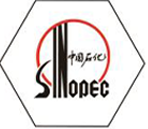
Nov . 17, 2024 13:10
Back to list
Effective Heat Exchange Technology for Enhanced Energy Efficiency in Industrial Applications
Understanding Heat Exchangers The Key to Efficient Thermal Energy Transfer
Heat exchangers are vital components in various industrial processes and systems, playing a crucial role in the efficient transfer of thermal energy. They enable the transfer of heat between two or more fluids, which could be liquids, gases, or a combination of both, without them mixing. This process is essential in enhancing energy efficiency and reducing operational costs in applications ranging from power plants to refrigeration systems.
.
There are several types of heat exchangers, including shell-and-tube, plate, air-cooled, and finned tube heat exchangers, each suited for specific applications. Shell-and-tube heat exchangers, for instance, consist of a series of tubes, one set carrying the hot fluid and the other the cold. This design allows for large surface areas to facilitate heat transfer while accommodating high pressure.
مبادل حراري

Plate heat exchangers, on the other hand, use thin plates to create channels for the fluids. They are compact, efficient, and suitable for applications where space is a constraint. Air-cooled heat exchangers utilize air as the cooling medium, commonly found in industrial processes where water may be scarce, while finned tube heat exchangers increase the surface area for heat transfer, enhancing efficiency.
The design and selection of heat exchangers are critical to their performance. Factors such as flow arrangement, heat transfer area, material compatibility, and fluid properties need careful consideration to achieve optimal efficiency. Advanced technologies, such as computational fluid dynamics (CFD), are increasingly employed in the design process to predict fluid flow and heat transfer characteristics more accurately.
In conclusion, heat exchangers serve an indispensable role in modern engineering and industry. By facilitating efficient thermal energy transfer, they help industries reduce energy consumption, cut costs, and minimize environmental impact. As the demand for energy efficiency continues to rise, the innovation and improvement of heat exchanger technologies will remain paramount in achieving sustainable industrial practices. Understanding their operation and selecting the right type for specific applications are essential steps toward optimizing performance in various systems.
Next:
Latest news
-
Safety Valve Spring-Loaded Design Overpressure ProtectionNewsJul.25,2025
-
Precision Voltage Regulator AC5 Accuracy Grade PerformanceNewsJul.25,2025
-
Natural Gas Pressure Regulating Skid Industrial Pipeline ApplicationsNewsJul.25,2025
-
Natural Gas Filter Stainless Steel Mesh Element DesignNewsJul.25,2025
-
Gas Pressure Regulator Valve Direct-Acting Spring-Loaded DesignNewsJul.25,2025
-
Decompression Equipment Multi-Stage Heat Exchange System DesignNewsJul.25,2025

